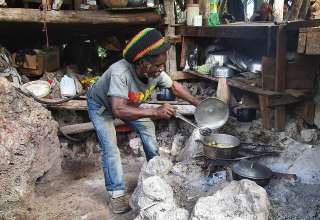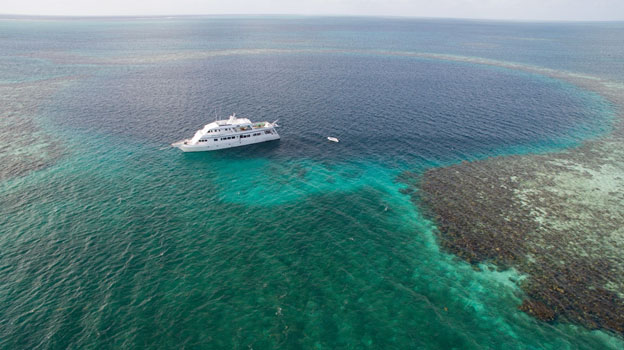
BELIZE CITY, Belize- It was just three words, the Great Blue Hole, that stuck in my head. A giant marine sinkhole in the center of Lighthouse Reef, 40 miles off the coast of Belize, the 407-foot-deep hole was such a mystery that ocean scientist Jacques Cousteau led an exploratory expedition to the site in 1971, and filmed the adventure. Which I’d forgotten. Until last summer, that is, when my wife Val and I decided to celebrate the lull in the Corona-virus lockdown with a brief vacation, one we agreed had to be outdoors, on a mountain trail, or alternatively, in the water.
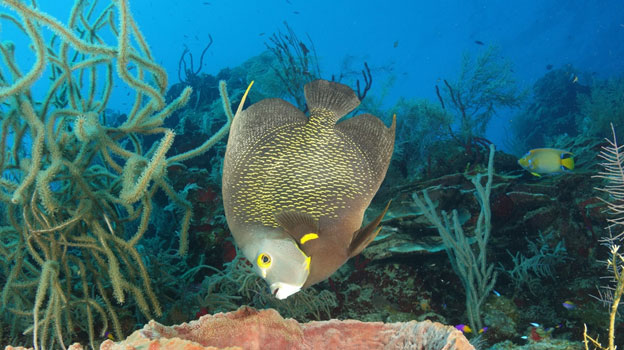
Since the Colorado mountains where we live don’t offer much in the way of dive sites, the answer was a week in the Caribbean on a live-aboard dive boat. Our first live-aboard experience, it meant a 24-7 vacation with people we’d never met. But on the plus side, it promised non-stop diving, more than we would have done otherwise. It was snowing in Denver when we started to plan, but Weaver Dive & Travel Center, the Boulder travel agent we contacted, weren’t surprised to see us. These trips book up early in the year,said consultant Audrey Tobin, an experienced diver herself. After mulling over a half-dozen options, we settled on a week in Belize on the 110-foot Belize Aggressor III, one of Aggressor Adventures Company’s two Belize City-based dive boats.
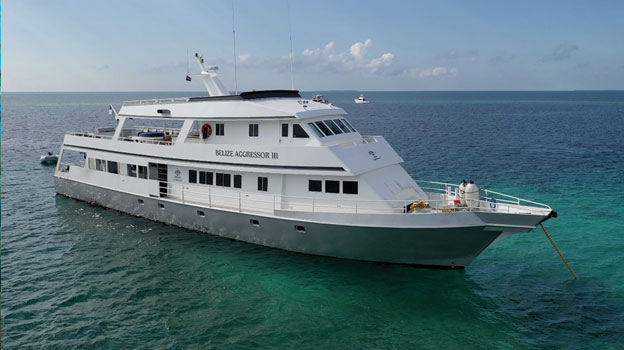
Then, while studying the map, I spotted it, the Great Blue Hole, right where we would be. Competitive fishing and sunny beaches are the reason most tourists visit Belize, on the Central American coast. But it’s the 700-mile-long Reef that draws divers like a magnet. Little known elsewhere and second in length only to Australia’s Great Barrier Reef, the Mesoamerican Reef is a diver’s dream, a vibrant coral forest alive with dozens of varied marine species. You’ll be seeing the Blue Hole, too, along with some of the Reef’s most popular dive sites,said Tobin, explaining that local residents call them atolls. These were Turneffe Atoll and Lighthouse Reef, both declared a Marine Reserve in 2012, and the site of the Great Blue Hole.Depending on the wind,she added. You’re likely to see the best places, Black Beauty, Silver Caves and Chain Wall, and Half Moon Caye, Tarpon Caye and Long Caye Ridge.
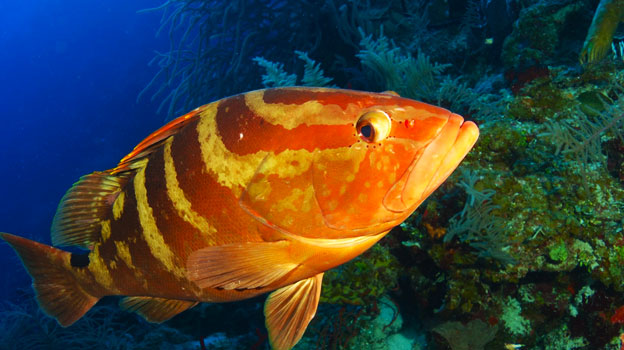
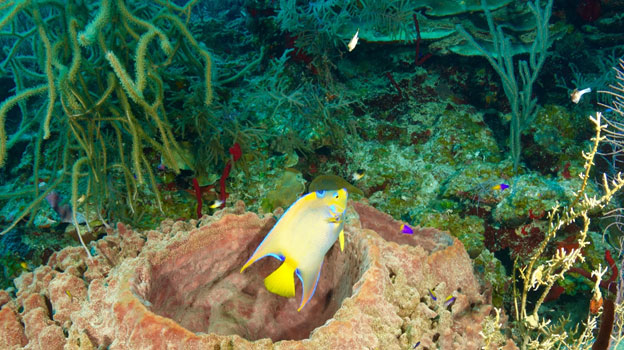
To our surprise, getting to Belize and going through customs was a breeze. The morning flight to Belize arrived on time, and thanks to our vaccination cards and Belize’s organized immigration officers – English is the national language – we went through customs without a hitch. Arriving at the dock and boarding the Aggressor III, we found our cabin, one of eight, located topside with windows, ideal for Val who sometimes feels claustrophobic. Traveling light and anticipating warm weather, we unpacked in less than ten minutes, leaving time to explore the dive deck. Organized down to the last square foot, it was divided into 18 separate stations, one per diver, with air and nitrox outlets and space for gearing up, hanging up wet gear and storing it afterwards. Locating our assigned spots, we felt ready for anything.
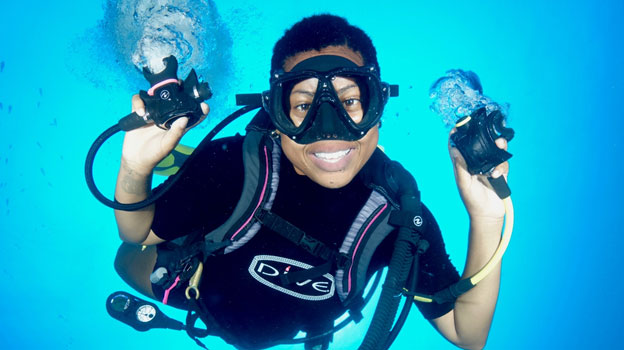
Before casting off, Captain Jerome introduced himself, his Dive Master Monique and the crew, and we followed suit, introducing ourselves one by one. Most surprising were our fellow divers’ range of ages and experience, from 30-something friends with fewer than 50 dives to a senior couple who counted more than 3500 dives between them. And it wasn’t long before the crew won our confidence. Gearing up for the first dive and waiting to get in the water, Val, a novice with just 19 dives to her name, suddenly clutched her mask as if she couldn’t breathe. In an instant, the dive master was there with a friendly word, helping her up and into the water. Popping up, she grinned at me through her mask. From there on it was smooth sailing.
As for the Aggressor III’s daily dive schedule – and that of many similar boats, I soon learned – it followed a pattern. Each day had two morning dives at one site, and two afternoon and a night dive at a second site, for a total of 26 possible dives over the week, all in the 30 to 80-foot sport-diving range. At each dive the boat anchored to a buoy, then we stepped off into the water one-by-one, looked around to locate the wall, turned right or left, and eventually, after finning along to the turn-around point (for air consumption or time), ascended to the top of the reef. Our second dive was similar, going the opposite way. Some divers kept up the pace, but there was no pressure to dive every time. The weather was so nice that a couple of us skipped a dive for a sunny afternoon on deck.
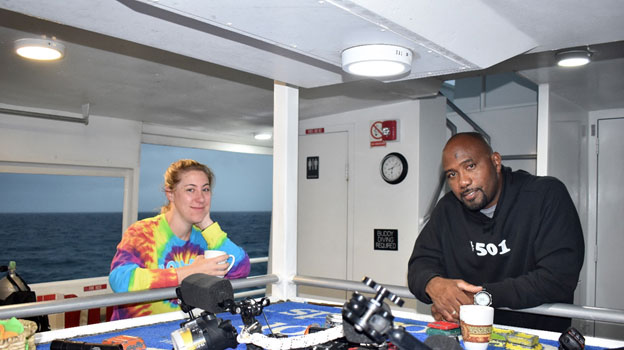
On Wednesday we dove in Great Blue Hole, our deepest dive , ranging from 125 to 135 feet deep. Descending in the gloom was spooky at first but you soon saw what intrigued Cousteau: Emerging through the light, numberless stalactites hung off the sides geologic features normally found in above-ground caverns. According to geologists, when sea levels rose eons ago, water gradually filled the cavern, eventually collapsing the limestone ceiling and creating the hole. To compensate for the extra-deep dive, we spent Wednesday afternoon on land, exploring the Moon Cave National Monument, a famous bird sanctuary.
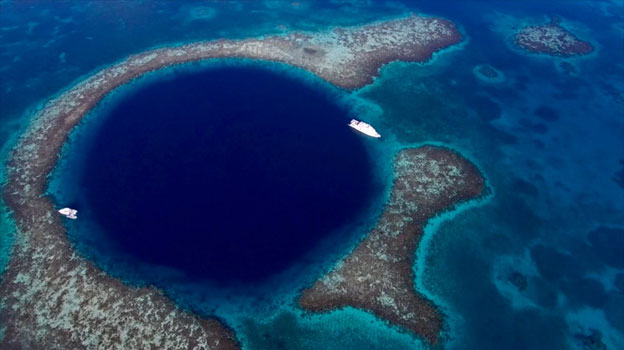
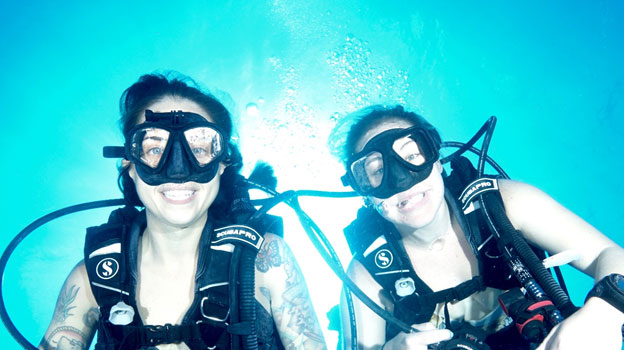
The night dives were a fish of a different color. Nocturnal marine animals we hadn’t seen during daylight now swam in front of our torches, from lobsters, crabs and squid to a variety of other reef dwellers. As dusk fell, schools of Tarpons, big silver fish, gathered around the anchor line waiting for the boat’s underwater lights to blink on. In no time the rays attracted schools of smaller fish, the tarpon’s favorite meal. As the dive ended, clusters of Tarpons whizzed past, still on the hunt. Did we see sharks? Not at night. But yes, on almost every other dive, and not just one shark, but two or three. Love them or fear them, if you dive you’re going to see them said one of the crew. They’re more afraid of you than you are of them. Some were faint shapes in the distance; a few cruised close to the boat, but ignored us. One of them, which the crew called Patches, named for the two white markings on his head, was a frequent visitor.
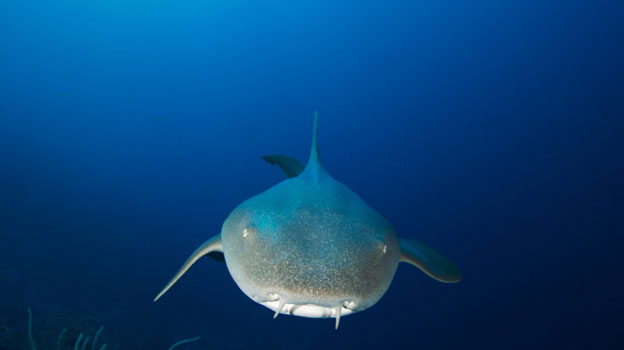
Thursday’s schedule duplicated Monday and Tuesday, but the dive part of the trip ended Friday morning when the no-diving 24 hours before-a-flight rule kicked in. Still living on board, we spent the afternoon touring a Mayan Temple or taking a so-called cave tubing ride. Dinner was on our own, but we slept on board. Saturday morning, we packed to leave, and after many friendly email exchanges, headed to the airport for the flight home.
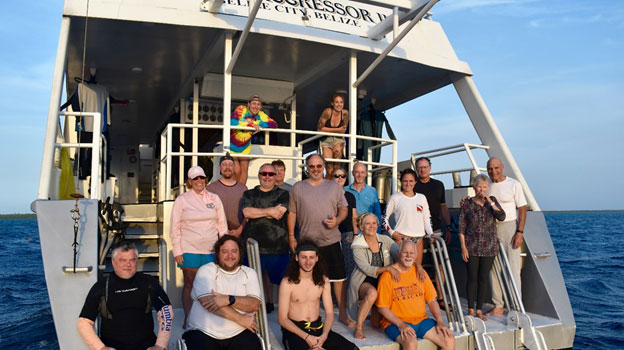
Like some of our fellow divers, Val and I took our own masks, fins, snorkels and my dive computer. The rest rented high-quality gear, mostly new Aqualung equipment from Aggressor. The only negative for us were the couple of nights that the bar, located next door, stayed open past midnight. My creature-sighting list included more hits than misses, with checks next to turtles, moray eels, eagle rays, stingrays, tarpons, groupers, entire schools of blennies, various angelfish, lobsters and little squid. Once in a while we spotted a small patch of dead coral, but most of the hard and soft corals were deeply colored, and healthy looking. Our fellow divers were companionable and the crew, from Captain Jerome on, were dedicated to showing us what they say is the world’s best diving. Unsung but appreciated were Chef Vanessa and J.R., whose superb meals, cooked in a tiny kitchen, earned high praise from everyone. If you want a closer look at the Great Blue Hole, visit Jacques Cousteau. Or spend a week in Belize, on a dive boat.


